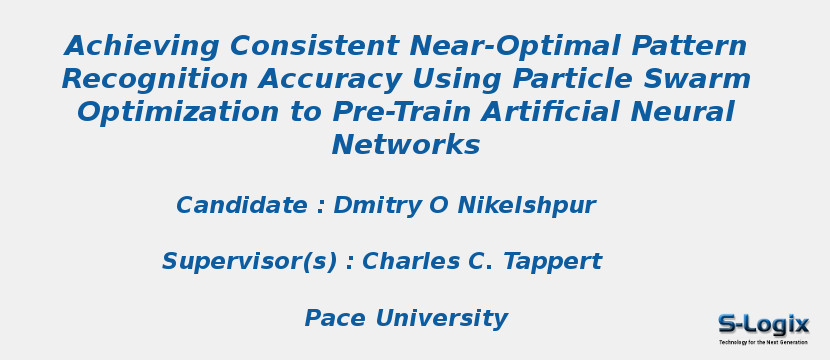Research Area: Machine Learning
Similar to mammalian brains, Artificial Neural Networks (ANN) are universal approximators, capable of yielding near-optimal solutions to a wide assortment of problems. ANNs are used in many fields including medicine, internet security, engineering, retail, robotics, warfare, intelligence control, and finance. ANNs have a tendency to get trapped at sub-optimal solutions (local optimum) , and therefore trial and error is commonly used to select the network topology and train the network, which is prohibitively time consuming and costly. Recent advances in our understanding of the biological brain, hardware, algorithms, and potential for novel applications renewed interest in ANNs. Evolutionary Artificial Neural Networks (EANN) are among the more successful paradigms explored to improve ANNs performance. EANNs employ evolutionary computation techniques such as Genetic Algorithms (GA) or Particle Swarm Optimization (PSO) to train ANNs, or to generate ANNs topologies. Still, these improvements are not consistent and usually problem-specific. ANN performance depends in part on the number of neurons in hidden layer(s). The more neurons in hidden layer(s) the better the networks ability to recognize specific samples it had seen during the training phase; however, the network becomes incapable of learning general patterns and recognizing these patterns in novel data. Performance on training data improves with training, while performance on testing data (samples the network had not seen previously) degrades (overfitting). This work rigorously investigated using PSO to pre-train ANNs with varying number of neurons in the hidden layer.
Name of the Researcher: Dmitry O Nikelshpur
Name of the Supervisor(s): Charles C. Tappert
Year of Completion: 2014
University: Pace University
Thesis Link: Home Page Url
